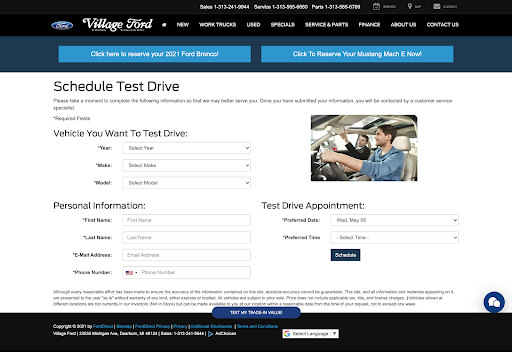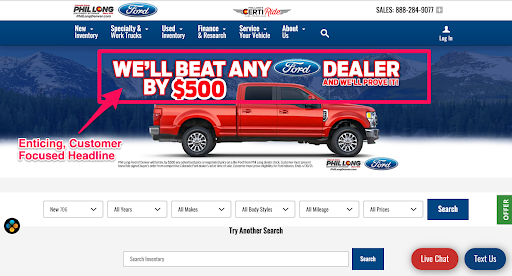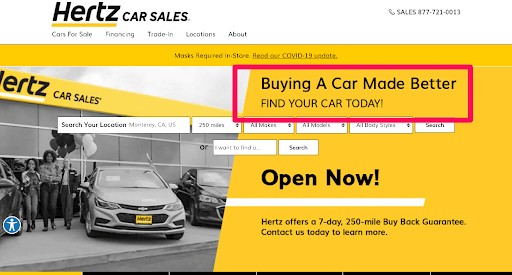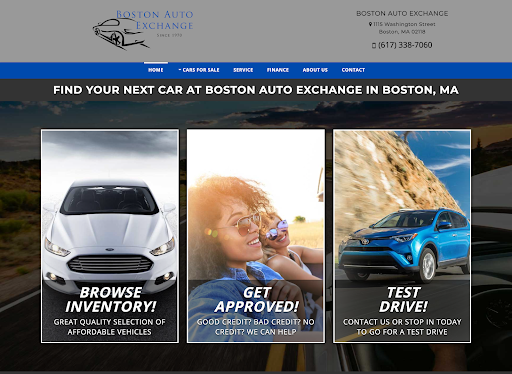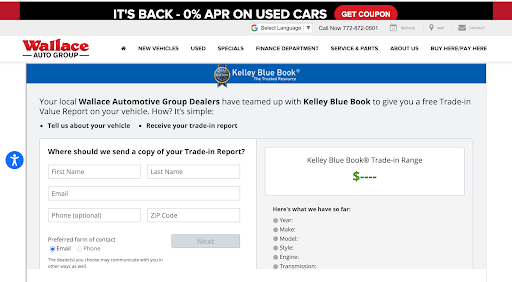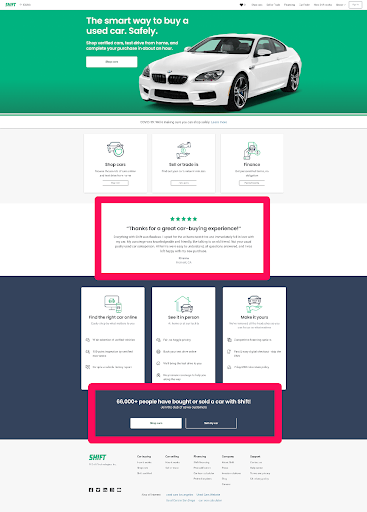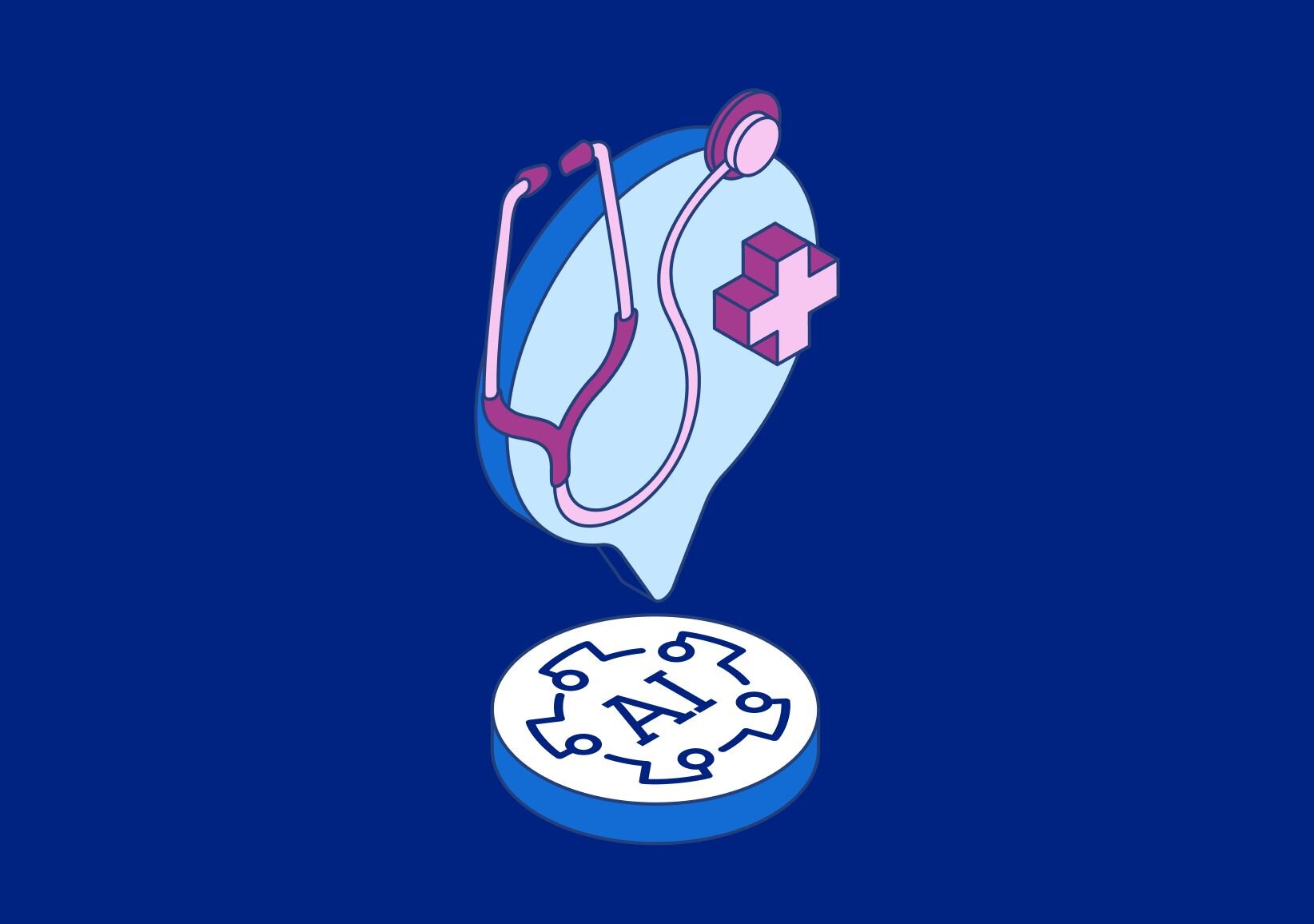For many consumers, the showroom is no longer a stop in their car-buying journey. Ninety-two percent of auto shoppers said they researched their desired vehicle online before making a purchase, with another 18% saying they would “buy a car sooner” if they could buy online and skip the dealership altogether.
However, many car dealership websites are ill-equipped to handle this influx of online interest, providing online auto shoppers with bloated home and inventory pages that are ineffective at capturing leads.
Maybe your website is lacking in the conversion department. Maybe you’re getting good organic and paid traffic to your dealership website, but visitors click away without leaving you any valuable contact information to follow up with.
This is where landing pages can help. Well-made automotive landing pages will always outperform a standard website in terms of lead generation and conversion rate. Plus, they’re quick and simple to set up and work in tandem with your website to provide massive results.
Types of automotive landing pages
While websites come in many shapes and sizes, automotive landing pages only come in two forms: a traditional landing page and a product landing page. To maximize lead generation and conversion rates, it’s important to understand how these two types of pages differ and complement each other.
The traditional landing page
Traditional automotive landing pages are simple, standalone web pages with the sole purpose of presenting value and capturing leads. They’re designed to be distraction-free, meaning they have few clickable links other than the call-to-action (CTA) buttons, forms for people to leave their contact information, and maybe a phone number to contact the dealership. They’re strictly transactional: you’re offering value in exchange for a visitor taking action and providing their information.
The type of value dealerships can offer include:
- Dealership coupons
- Special financing offers
- RSVPs for exclusive dealership events
- Registering for test drives
- Promotional events
When used as a dedicated landing page for your pay-per-click (PPC) ads and specific marketing campaigns, it can be extremely effective at driving traffic and conversions. According to Unbounce, landing pages give “you more control over where traffic flows, and ultimately, where your marketing efforts and ad dollars go.”
Let’s take a look at a traditional landing page from Village Ford in Dearborn, Michigan:
Source: Village Ford Dealer
The purpose of this landing page is straightforward: get leads to come to the dealership for a test drive. When paired with a PPC ad targeted at auto shoppers looking to test drive a Ford, this page makes it easy for them to get behind the wheel.
The product landing page
Product landing pages cater more to visitors who are browsing than those ready to make a purchase or sign up for an offer. While traditional landing pages typically serve as the entry point into a sales funnel for visitors, the product landing page is designed to inform and nurture visitors in their buying journey. They use many of the same design elements and can still generate leads, but their main goal is education and selling a product. Or, in this case, a vehicle or auto service.
Here’s an example of a product page taken from Seaside Chrysler Dodge Jeep RAM in Seaside, California, showing details for a new 2021 Jeep Grand Cherokee.
Source: Seaside Chrysler Dodge Jeep RAM
This product page is loaded with exciting information for the new Jeep Grand Cherokee, giving visitors plenty of options to learn more, see incentives they might qualify for, and begin the car buying process right from their computer.
Elements (and examples) of automotive landing pages
So what do you need in order to start crafting engaging landing pages for your car dealership? Here are the five critical elements that should be included on each landing page.
Clear and enticing headlines
The headline is one of the most important pieces of any landing page.
Studies show that only two out of ten people will read past your headline, meaning if your headline doesn’t hook the reader, there’s a good chance they’ll abandon your landing page altogether. This could spell bad news for your advertising budget if you’re driving traffic from paid sources, such as social media ads or PPC.
Let’s look at a great headline example from Phil Long Ford of Denver in Denver, Colorado.
Source: Phil Long Ford
Any headline promising to save you $500 is worth paying attention to! Phil Long Ford uses an enticing, benefit focused headline that grabs attention of viewers and keeps them glued to the website looking for their dream car.
A more corporate example of an emotionally loaded headline is found at Hertz Car Sales.
Source: Hertz Car Sales
A majority of people will tell you the car-buying process is usually pretty stressful. Hertz takes the stress out of the equation with a simple, benefit-driven headline saying they’ve made buying a car better. Not only that, but they sweeten the deal with a sub-headline outlining the immediate benefits of purchasing from them: “a 7-day, 250-mile buy back guarantee.”
Takeaway: Spend time carefully crafting your landing page headlines to make sure they’re clear, concise, engaging, and benefit-focused.
Engaging hero images
A hero image is a “credible photo or video of a solution that encompasses relevance, context, value, and emotion to support, educate, or persuade a customer.” In terms of automotive landing pages, these images and videos highlight vehicles and special offers to help form an emotional connection with visitors.
Take a look at this hero image on the Ford F-150 product landing page:
Source: Ford
While there might not be a clear and concise headline on this page, the image does a good job of showing visitors what they can expect from the Ford truck line: rugged, hard-working trucks that operate in all kinds of conditions. Hero images like this go a long way toward connecting viewers with the feel of the Ford brand.
Takeaway: Use strong imagery on your landing page design to capture attention and evoke emotion in your viewers. Consider investing in professional photographers to take pictures of your inventory or purchase stock photos to give your landing pages a well-polished, professional look.
Compelling calls to action (CTAs)
Believe it or not, your landing page visitors want to be told what to do. While engaging headlines and hero images tell your readers what they can get from your dealership, a CTA provides them with the action steps they need to take to make it a reality.
Take a look at the landing page for Boston Auto Exchange in Boston, Massachusetts.
Source: Boston Auto Exchange
Rather than small, hard to find buttons, Boston Auto Exchange uses large, screen sized CTAs to capture attention and give viewers clear direction on next steps: browsing their inventory, talking to their finance team, or test driving a vehicle.
Another example of a strong CTA is found on Cardinale Nissan’s landing page:

Source: Cardinale Nissan
Not only do they use a unique CTA that shows visitors they can buy from home, but they also prominently display the dealership phone number in the upper right-hand corner of the page – creating the assumption that they’re always ready to talk.
Takeaway: Weak CTAs won’t cut it. Whether you’re offering a free quote, an event RSVP, dealership coupons, etc., your CTAs must be compelling enough to make a visitor want to click.
Targeted contact forms
You can’t collect lead information without concise, targeted contact forms.
Here's an example of a form for a free trade-in value report from Wallace Auto Group:
Source: Wallace Auto Group
This form is simple, straightforward, and the promised end result (making sure you’re getting what your car is worth) makes filling it out worthwhile.
Takeaway: Shorter forms often lead to more conversions, but that doesn’t necessarily mean you should skimp on collecting pertinent lead information. Be sure to collect names, phone numbers, email addresses, and even ZIP codes, so you and your sales teams can efficiently follow up with leads. If you want to learn more about your visitors, consider using form tracking software for even more insight into your customer’s journey.
Social proof
Before purchasing a product, 93% of online shoppers will read the reviews. Placing testimonials and reviews right on your landing pages helps build trust between visitors and your dealership.
Shift provides an excellent example of social proof on their landing page.
Source: Shift
It’s hard to argue with 66,000 customers, especially if they all seem to have had a positive experience like the testimonial says. These bits of social proof help visitors feel at ease when purchasing from Shift.
Takeaway: Take advantage of what people are saying about your business. Make sure your dealership is actively collecting reviews from previous customers, then display them on your landing pages to help new customers see that you are worthy of their trust.
Start using automotive landing pages to increase your conversion rates
Well-crafted landing pages can significantly increase lead generation and conversion rates for your car dealership and are relatively quick and easy to set up. Landing page software like Unbounce and Instapage offers code-free solutions with pre-made templates to get you up and running even faster. Plus, if you use dynamic number insertion and form tracking, you’ll know which calls came from which landing pages – providing your visitors with better customer experiences and helping you see which landing pages are working.




